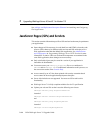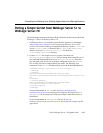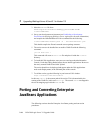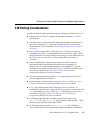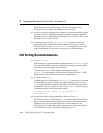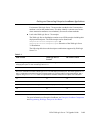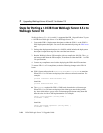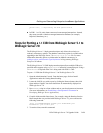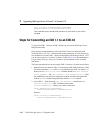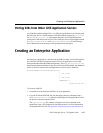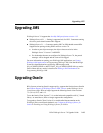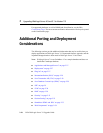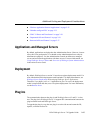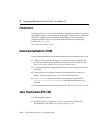
Porting and Converting Enterprise JavaBeans Applications
BEA WebLogic Server 7.0 Upgrade Guide 2-21
return null; // required by the EJB specification
}
In EJB 1.1 or 2.0, entity beans cannot use bean-managed transactions. Instead,
they must run with a container-managed transaction attribute (for example,
Required, Mandatory, etc.).
Steps for Porting a 1.1 EJB from WebLogic Server 5.1 to
WebLogic Server 7.0
The WebLogic Server 5.1 deployment descriptor only allows the exclusive or
read-only concurrency options. The database concurrency option is available when
upgrading to the WebLogic Server 7.0
weblogic-ejb-jar.xml file. For more
information about this option, see information on database concurrency in
weblogic-ejb-jar.xml Document Type Definitions in Programming WebLogic
Enterprise JavaBeans.
The WebLogic Server 7.0 CMP deployment descriptor allows multiple EJBs to be
specified and it supports using a
TxDataSource instead of a connection pool. Using a
TxDataSource is required when XA is being used with EJB 1.1 CMP.
To port a 1.1 EJB from WebLogic Server 5.1 to WebLogic Server 7.0:
1. Open the Administration Console. From the home page, click on Install
Applications under the Getting Started heading.
2. Locate the JAR file you wish to port by clicking the Browse button, then click
Open and then Upload. Your bean should now be automatically deployed on
WebLogic Server 7.0.
3. Run a
setEnv script in a client window and set your development environment.
(For more information, see Establishing a Development Environment in
Developing WebLogic Server Applications.)
4. Compile all the needed client classes. For example, using the Stateless Session
Bean sample that was provided with WebLogic Server 7.0, you would use the
following command:
javac -d %CLIENTCLASSES% Trader.java TraderHome.java
TradeResult.java Client.java
5. To run the client, enter this command:




